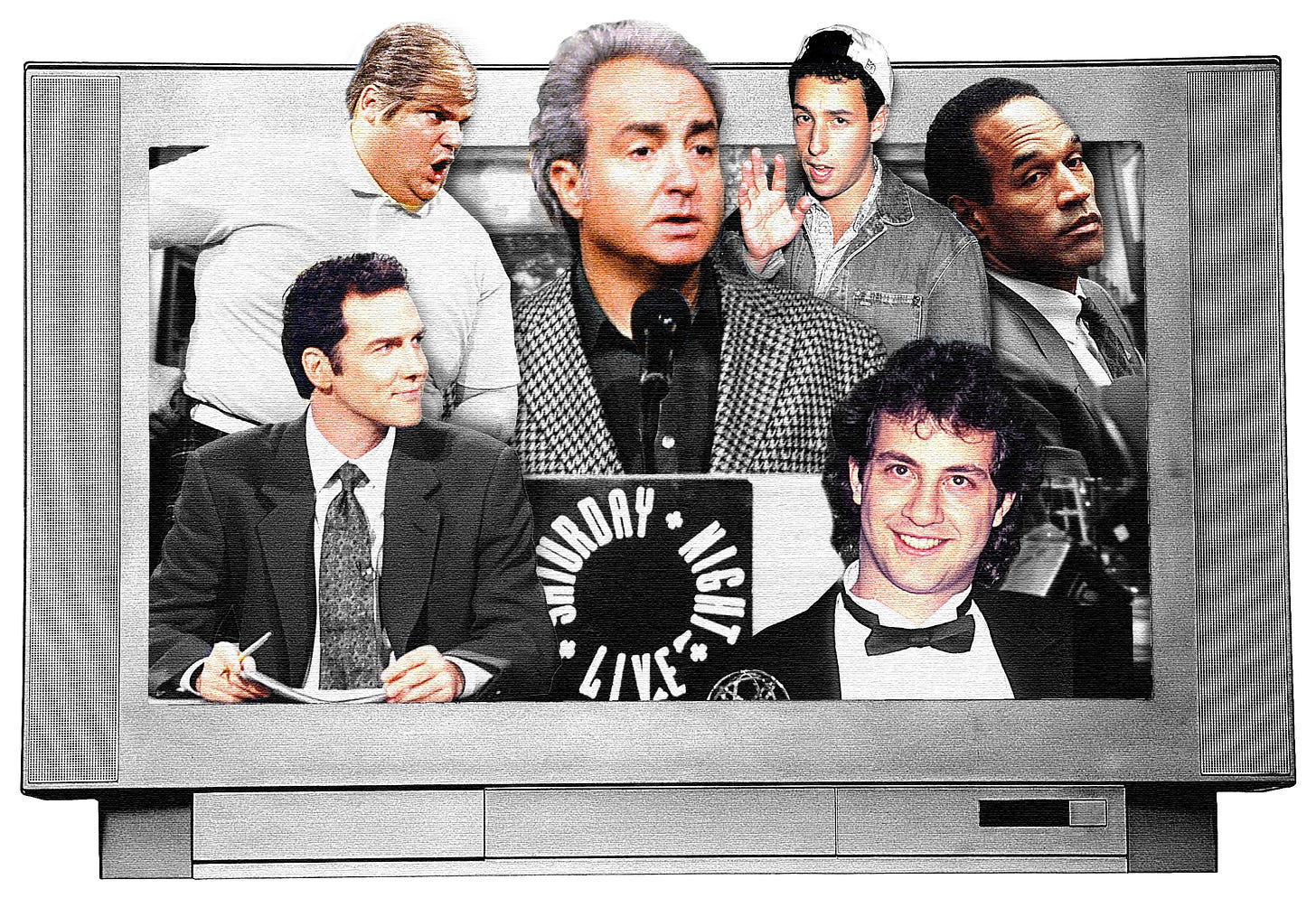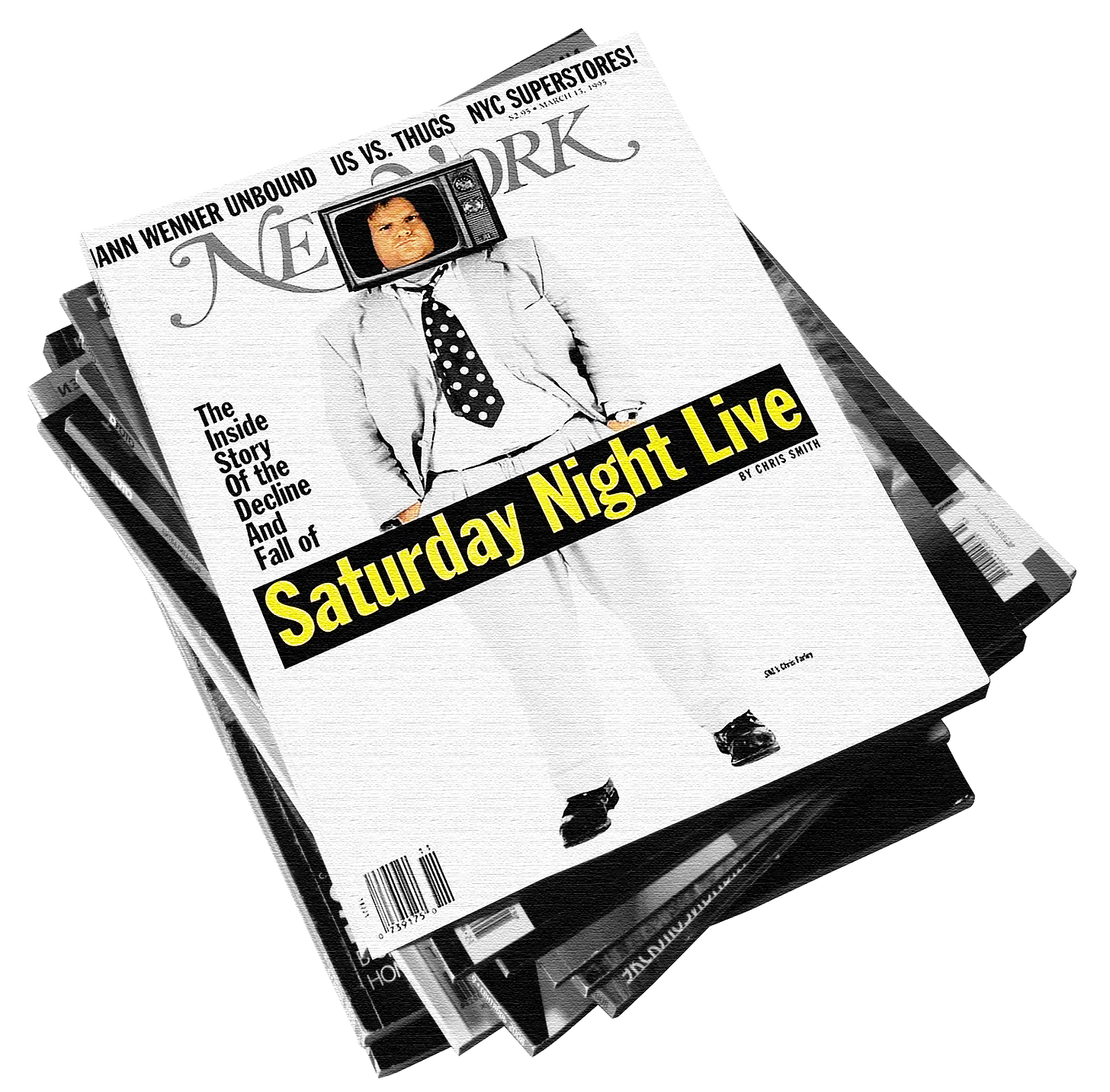Lorne Michaels vs. NBC: The Epic 1990s War That Nearly Cost Him His Job
Excerpt: It was the 'SNL' era of Sandler, Farley, Carvey. But ratings fell, and the suits wanted its producer out, Judd Apatow to take over and O.J. erased

Andy Lewis writes The Optionist, a standalone newsletter from Ankler Media for anyone looking for fresh ideas to develop into a movie or TV show. Each week, he unearths IP ripe for adaptation, from forthcoming books to viral journalism stories.
The truly rarefied air of celebrity is to be identifiable solely by your first name: Leo, Bruce, Keanu, Zendaya. Even rarer still is to achieve that status from behind the camera. As New Yorker articles editor Susan Morrison chronicles in her expansive biography of Lorne Michaels, Lorne: The Man Who Invented Saturday Night Live, the SNL impresario has earned his place in the one-name club.
Yet even after 50 years in the public spotlight, Michaels, born Lorne Lipowitz, has remained something of an enigma, well-known and yet entirely not. In tracing the life and career of the Canadian comedy legend born in Toronto in 1944 from his early work on Laugh-In and groundbreaking specials with Lily Tomlin to his long reign atop the late-night variety show that’s defined several generations of TV and film comedy, Morrison brings depth both to how SNL really works and how Michaels kept it relevant for decades.
The 1990s represented a period where Michaels was alternately the king of comedy and also at risk of losing it all. The decade featured some of the show’s most beloved performers — from Adam Sandler to Will Ferrell — and recurring sketches like The Church Lady and Wayne’s World. But NBC executives, especially West Coast President Don Ohlmeyer, weren't happy. They felt that the show just wasn’t funny anymore and that Michaels ignored their wishes, especially to lay off poking Ohlmeyer’s friend, accused murderer O.J. Simpson. They wanted to replace Michaels with someone younger, notably pushing Judd Apatow, who was hot off The Ben Stiller Show.
This exclusive excerpt looks at that forgotten moment when history almost took a different turn and how Michaels survived by skillfully outmaneuvering his rivals.
From Top of the World to ‘Saturday Night Dead’

The beginnings and the ends of things are often great, Lorne Michaels likes to observe. It’s the middles that are tricky, if not downright bad. That’s how he looks at SNL in the mid-’90s. In December 1992, Entertainment Weekly put the cast on the cover as “Entertainers of the Year,” announcing that SNL had “reclaimed its status as the show of the moment.”
The season after a presidential election is known around SNL as a hangover year. 1993 was no exception. The New Yorker complained about the “megadoses of MTV,” singling out Adam Sandler (“with his baseball cap worn backward . . . a Gap ad gone wrong”) and Chris Farley (“the most over-indulged one-note”). In 1994, Entertainment Weekly, barely a year after its “Entertainers of the Year” feature, asked, “Is ‘Saturday Night’ Dead?”
As the ratings kept falling, the network executives focused their disapproval on Jim Downey, the longtime head writer, and what they saw as his loose management style. They ordered Michaels to fire him.



